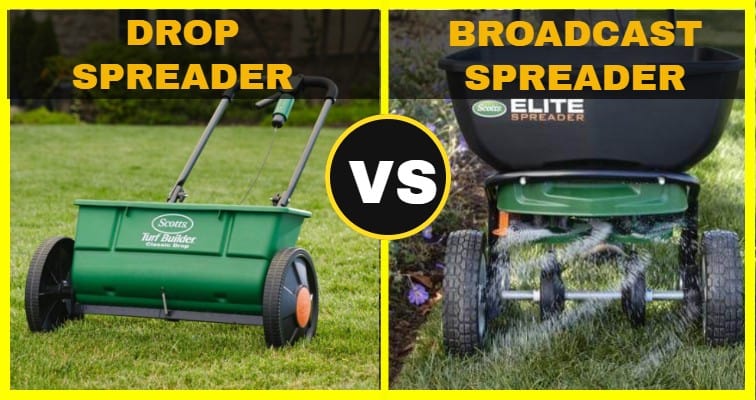You visit your friend’s neatly cut garden or walk by a magnificent park, and all you think of is lying on the lawn and enjoying the lush green atmosphere.
Lawns that are appropriately taken care of evoke blissful emotions and are naturally soothing. These gardens cannot have a beautiful look without the help of critical equipment; the spreader.
The spreader will handle anything from fertilizer application to seeding.
Read this guide for a showdown between the two most popular spreaders. But before we start the battle, let us see precisely what a spreader is.
You’ll find this piece particularly useful if you’re looking for ways to overseed your lawn or maintain it without spending all your time working in your garden.
What is Spreader?
Spreaders are garden equipment that can handle granular fertilizer application, herbicides application, and seeding. All these activities can be stressful and time-consuming; that is why using a specialized machine is critical.
Taking care of your lawn involves the planting of seeds, applying fertilizer and herbicide at different intervals. See why the maintenance of your property is dependent on the spreader.
Spreader size can vary from hand-held to tractor-pulled equipment. Their sizes most times determine their power, with the smaller equipment usually packing a smaller capacity.
Drop Spreader Vs. Broadcast Spreader
The two main types of spreaders are drop spreaders and broadcast spreaders. The significant difference between them is in their mode of application.
While their application mode is a significant difference, several other differences make up these spreaders, and for your spreader to work efficiently in your yard, you need to get the right one.
That is what this article is all about; to help you choose the best spreader.
What is a Drop Spreader?
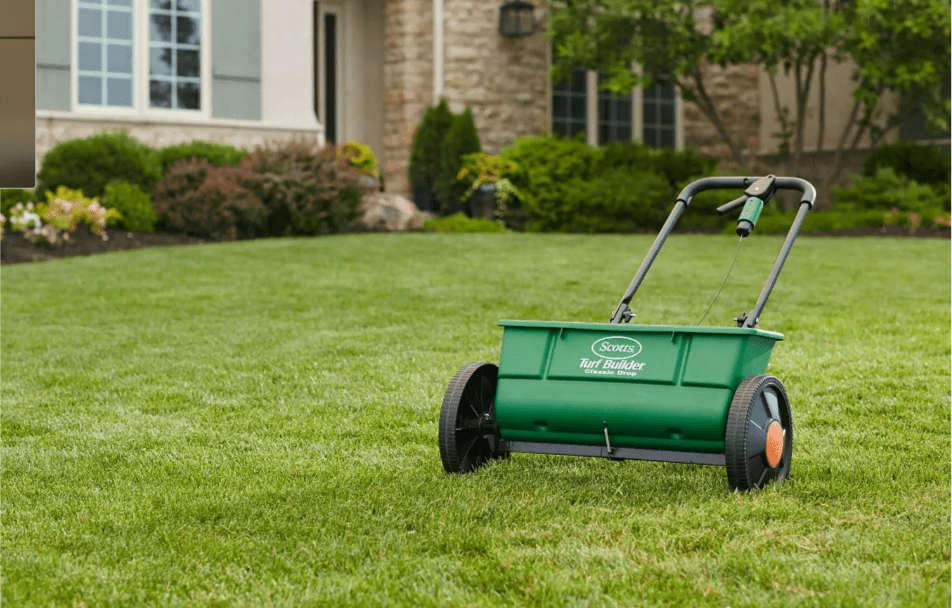
As the name implies, Drop spreader lets seed drop from openings under the spreader and fall directly in specified locations.
Drop spreaders give you control over the process with precision into already made rows. This type covers a smaller area at once, and the value of your spread is determined by the distance between the farthest holes under the spreader.
The best way to avoid missing areas in your lawn when using the drop spreader is by setting the spreader to 50% and using it in a crosshatch pattern. This will ensure all areas of your yard are covered.
The drop spreader uses gravity to release your seeds, fertilizer, or herbicide.
Pros of Using a Drop Spreader
- It is accurate: the drop spreader’s accuracy is a significant advantage it has over other spreaders. It delivers the seed or fertilizer directly on the spot where you want it.
- Wastage is minimized: as a result of its accuracy, when using a drop seeder, you’ll spend the right amount of seed or fertilizer, and there would be minimal waste of scarce resources.
- Hardly affected by the wind: whereas wind can be a significant problem for other types of spreaders, it is hardly an issue when using a drop spreader. This is because the holes on the spreader from which the seeds or herbicides are released are close to the ground and under the spreader, where there is hardly any wind interference.
- Relatively easy to operate: the drop spreader is quite easy to use even by beginners. It contains straightforward and uncomplicated controls. This includes when calibrating the disperse rate.
- Best suited when working in small areas: this includes lawns with lots of landscaping and planting beds.
Cons
- Not suited for a large area: using a drop seeder in a large area will mean spending a lot of time and consuming more energy than necessary. This is because its spread is small.
- Their hoppers are smaller: a smaller hopper means more frequent refills, which also translates to more time and energy wasted.
- Easy to form stripes: because of its application style, it is relatively easy to create stripes if used in a crosshatch pattern.
What is Broadcast Spreader?
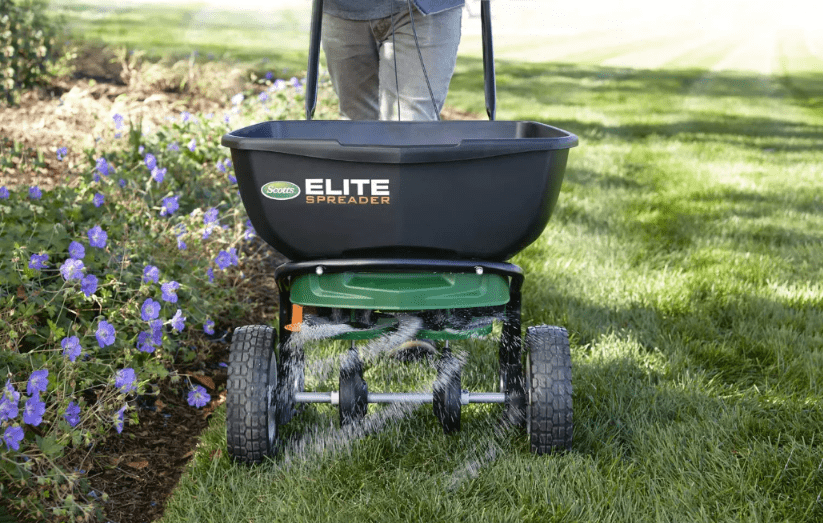
They are typically medium to large in size and can be pushed manually or attached to a lawn tractor.
It works by spraying the content of its hopper in an overlapping pattern across a wider area. While seeds fall directly to the ground from the hopper holes in a drop spreader, in a broadcast spreader, however, the seeds, herbicide, or fertilizer falls into an area with a fan that blows the seed, spreading it over an arc.
Because the seeds go thinner, the farther they spread, your best bet to getting a uniform lawn is by setting the spreader at 50% and using it in a crosshatch pattern.
Its mode of application allows it to cover a large area in a short time.
Pros of Using a Broadcast Spreader
- Best suited for a large lawn: the broadcast spreader is the best for a large lawn area because of its size and spread. It spreads over an arc across a large area.
- It is faster: because of its spread angle, you get to cover your lawn in less time when using the broadcast spreader.
- It is larger: this usually means a bigger hopper, which translates to not needing to refill at every turn. A larger spreader most times means more power and an opportunity to attach it to a lawn tractor.
Cons
- It is affected by the wind: strong winds can affect the effective use of the broadcast spreader because of its application mode. Winds can scatter the seeds and stop them from reaching some other areas.
- It is not suited to tight spaces: if your lawn has a lot of tight spaces or landscapes, then you should avoid using a broadcast spreader.
- Poor accuracy: the broadcast spreader is not a very accurate machine. It will spread the fertilizer on walls and walkways; some states require cleanup of fertilizers on walkways; this means more effort is needed.
- There is a lot of wastage: because of its spraying application method and a lack of accuracy, there is a lot of wastage of seeds, fertilizer, and herbicides. Those falling in planting beds, on paved pathways, or walls all represent waste.
- More skill is needed to operate: to effectively handle this spreader, you will need more expertise as it is a reasonably complex machine.
Factors That Determine the Type of Spreader to Use
You cannot just buy any spreader you find in the market and hope for the best. You have to select the most suitable spreader based on your particular situation. I’ll be showing you some factors that will determine the type of spreader you should buy.
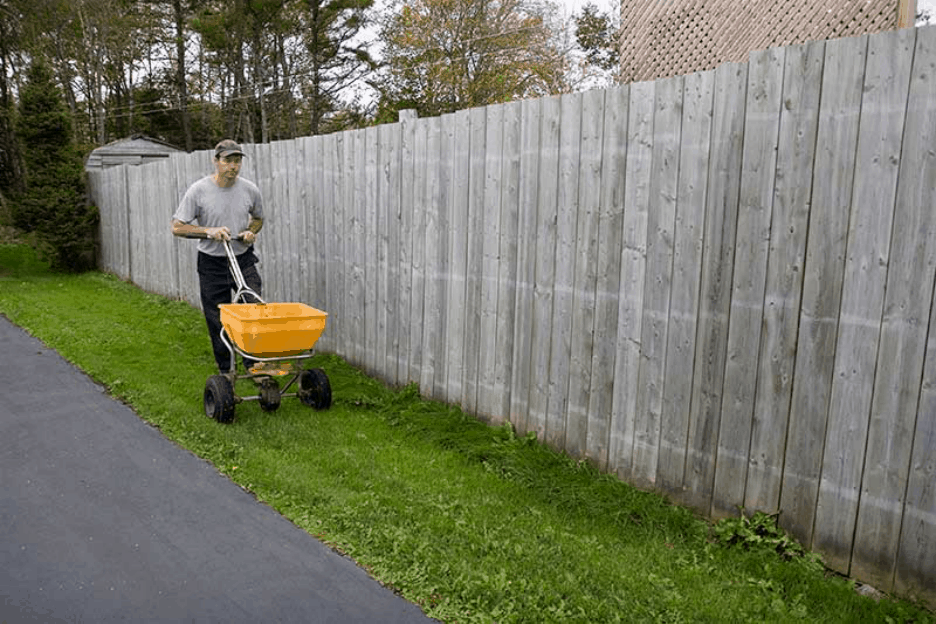
Wind Condition
The wind condition in your area will determine the type of spreader you can use. If you usually have strong winds in your area, it is best to use a drop spreader as it is not usually affected by wind.
Spreading Goal
What is your goal of using a spread?
Answering this question will determine the type of spreader to use. If you’re looking for a uniform spread and wouldn’t mind investing a little more time then, the drop spreader is the one for you.
However, if you need a thicker lawn covering a wider area, it is best to utilize a broadcast spreader.
Shape of Lawn
Your lawn’s shape is a significant factor as the two spreaders work effectively with varying lawn topographies. The drop spreader will work best on the hexagonal shaped lawn with easy to reach lawn areas as it cannot spread in places it cannot roll on. It is also easy to protect flower beds and other elevated platforms.
For broadcast spreaders, difficult to reach lawn topographies can be spread over due to its application mode. It is, however, challenging to protect areas like flower beds.
Time Available
If you have a lot of time on your hand, you can use a drop spreader as it is focused on accuracy and takes a lot of time to complete.
A broadcast spreader will save you time but is far less accurate.
Spreader Settings & Calibration
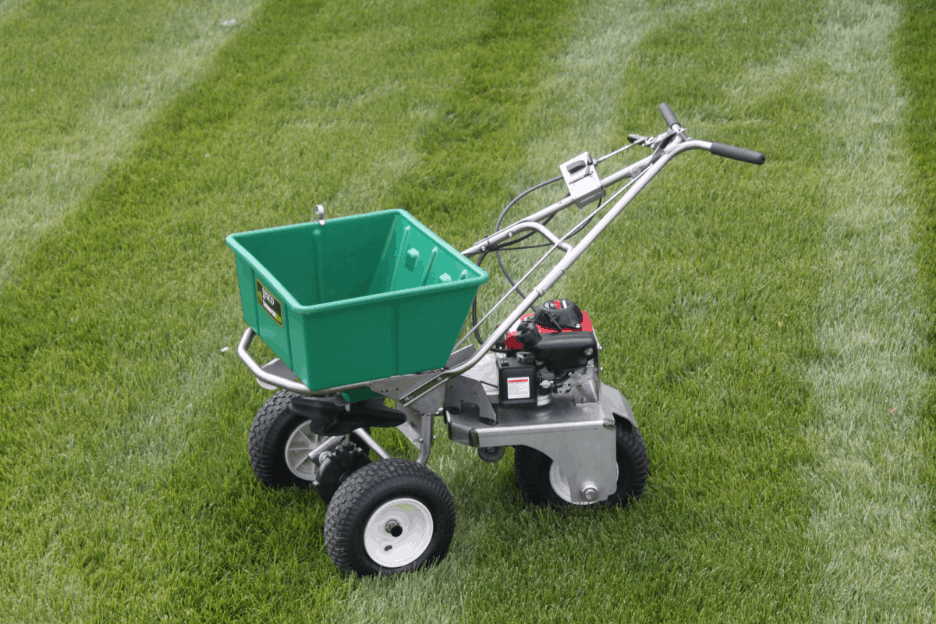
Your spreader setting will determine the speed and application pattern of your seeds, herbicide, or fertilizer. The setting is vital so you can get the right amount of seed out of the hopper at a particular time.
Usually, walk-behind spreaders are set with a walking speed of 3.5 miles per hour in mind. This will guide your settings, so the seeds continue to come out at a reasonable rate while you push it.
Seeding rates and recommended settings are stated in the owner’s manual.
Calibration
After setting, calibration is next. But what is calibration?
Calibration is dictating the yield of your spreader at a particular setting. You should calibrate your spreader a few times a year if you make use of it frequently.
Calibrate Your Spreader in 7 easy Steps
1. Choose a medium level calibration by predicting one you think will get the best outcome.
2. Check your spreader’s effective width per swath
3. Select a test area. The test area is the area multiplied by the spreader’s spread.
4. Pour a specified amount of seed in the hopper and install a catch pan to calculate the seed spread.
5. Keep the same walking speed from the beginning to the end.
6. Weigh the seed remaining in the hopper or catch pan to determine the amount used.
7. Make adjustments to your settings and try it out till you get the desired outcome.
Last Words
Generally, a small urban lawn will need a drop spreader. In contrast, a more extensive suburban lawn will need a broadcast spreader.
Check the factors and determine which spreader will suit your situation best.
